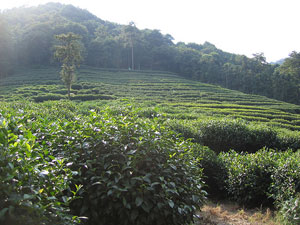China’s Mega City? Er…Hang On a Second
Op-Ed Commentary: Chris Devonshire-Ellis
Jan. 27 – The Daily Telegraph has stirred up a bit of comment with this article about China creating a “mega city” of 42 million people.
While usually less prone to exaggeration than much of the China focused media, on this occasion they’ve got it wrong. The area described, which encompasses large tracts of Guangdong Province in South China, links nine existing cities through a combined high speed rail network. The first spur of this was opened two weeks ago and, upon completion in 2020, three lines will be operational – effectively linking the western part of the province directly to the eastern part for the first time. Dividing the western and eastern parts is the Pearl River, China’s third longest at 2,200 kilometers, which flows through Guangzhou, the provincial capital, and exits China close to Zhuhai and Macau.
Centuries ago, the Portuguese were the first acknowledged foreigners in China when Jorge Alvares sailed up a small section of the Pearl River and landed at Macau. Years later, the British would send warships further up and bomb Canton in order to force trade concessions. In a roundabout way, Hong Kong was formed partly as a result of these early explorations.
But to call an area comprising nine existing cities a mega city just because they are to be linked by train services is a bit much. Neither is this “news” particularly new. We wrote about the nine cities concerned, and the developing rail link system over two weeks ago. That article, rather less sensationally titled “High Speed Rail to Connect Nine South China Cities” is here.
The other reason the Telegraph have gotten it wrong is in the terminology used. “Mega city” conjures up images of gleaming spires, steel cathedrals, teeming masses of people, all hurrying to and fro, avenues of shopping malls, horrendous traffic jams and air so thick one could stir it. Mexico City, Mumbai, and Chongqing mixed in with a dash of L.A. perhaps. But Jiangmen, Zhaoqing and Foshan?

A Chinese mega city yesterday. 42 million people hiding somewhere, or eaten by tigers.
Sure, as Guangdong’s second tier cities their central districts have each taken on the standard, white-tiled anonymity beloved of China’s city planners: bland, somewhat featureless and repetitive. If you lumped them all together you could make a case for a huge urban sprawl. But the problem is what lies in between. Guangdong is a large, green province, subtropical and steamy in the summer, yet affected by the monsoon and occasionally hit by typhoons. Winter brings chills and mists. Once the home of the South China tiger (now extinct in the wild), it is still a major tea producing area and teems with wildlife in its central and northern mountains. Instead of being populated by millions of people, much of the area described is agricultural and even densely forested. Pythons inhabit these woodlands, as do wild boar, spotted deer, and golden monkeys.
I know all this because I lived in Guangdong Province for seven years. My practice, Dezan Shira & Associates, has three offices in the region and we’ve written two editions of a substantial guide book about the area – a book that includes all of the cities supposedly being squeezed into one megatropolis. Whether it’s the Telegraph exaggerating the picture, or the local government talking it up is hard to determine. But one thing is for sure – Guangdong’s new high speed rail line interconnecting nine second tier provincial cities surrounded by tea plantations and undulating countryside is rather different than the mental imagery created by the phrase “mega city of 42 million.”
Related Reading
 Guangzhou City Guide (complimentary download)
Guangzhou City Guide (complimentary download)
Asia Briefing’s City Guide on Guangzhou is designed for the investor seeking a general overview on one of China’s largest cities. Compiled by our own local resources and expertise, this guide presents the investor a real picture of the city’s economic conditions.
- Previous Article China Failing to Cool off GDP Growth as Some Cities Plan for 30% Increases
- Next Article Shanghai LP & GP International Summit Looks to Improve Equity Investment to China









